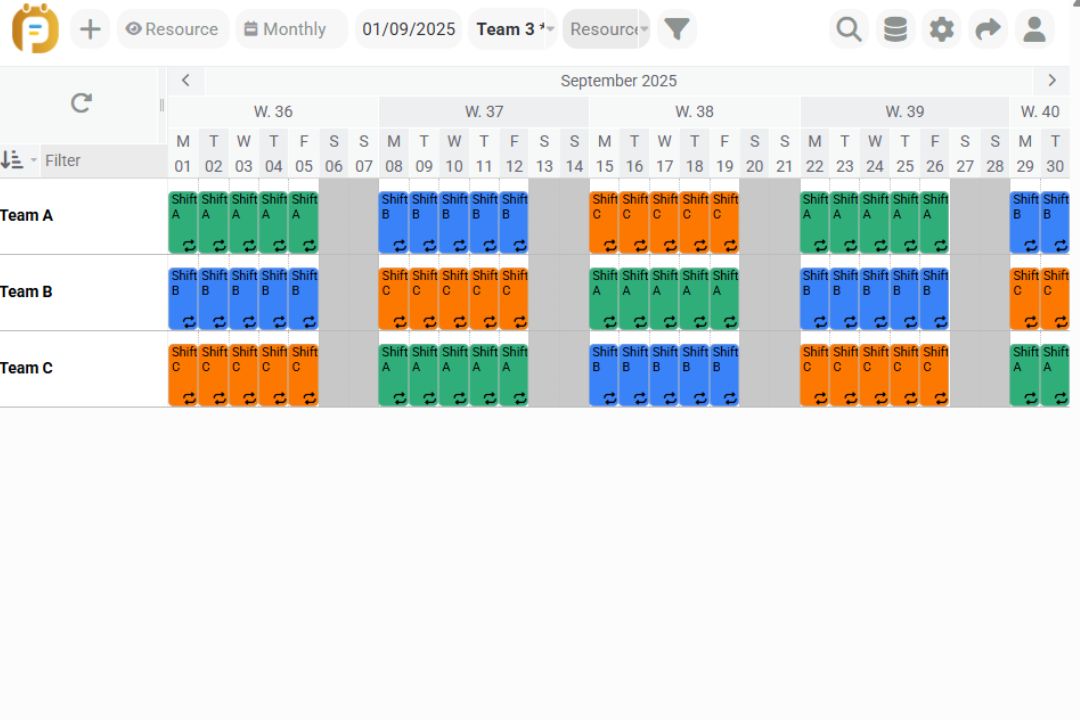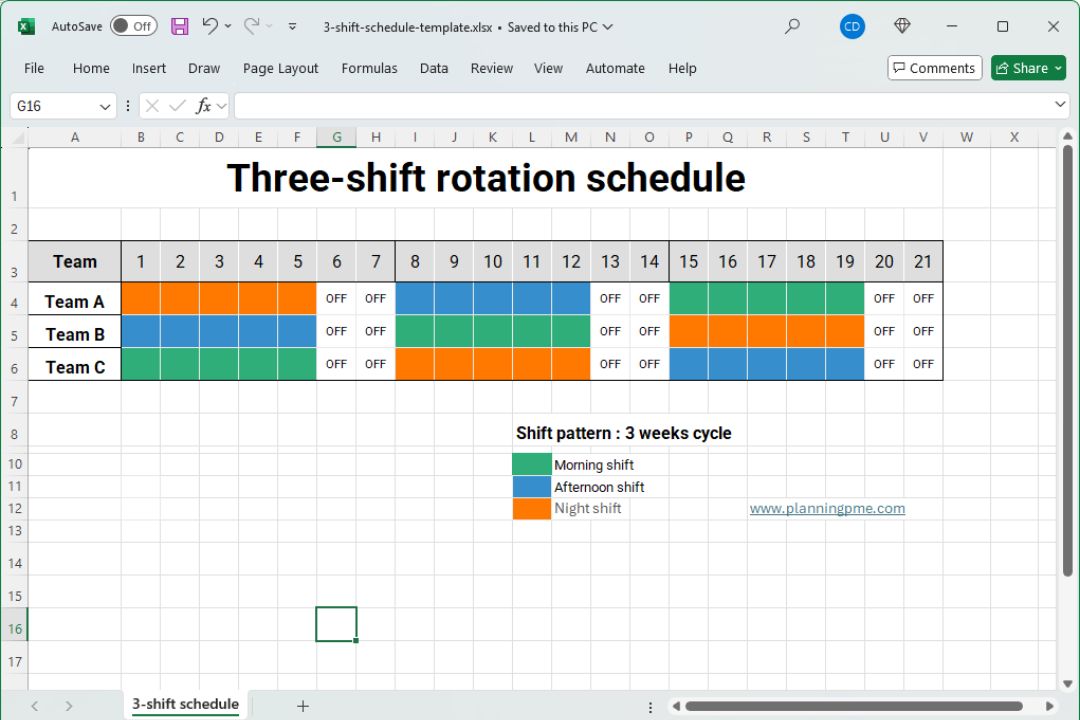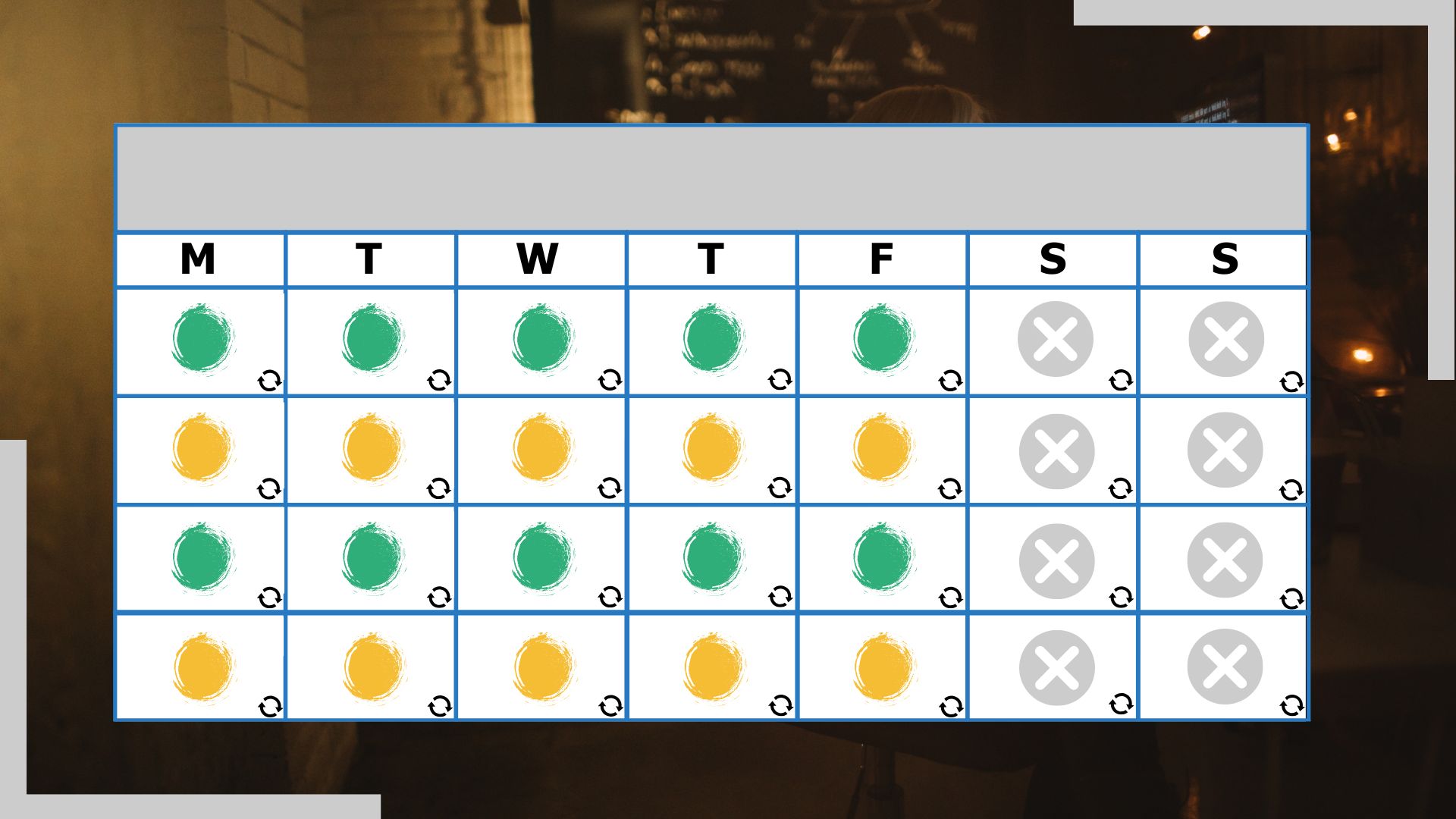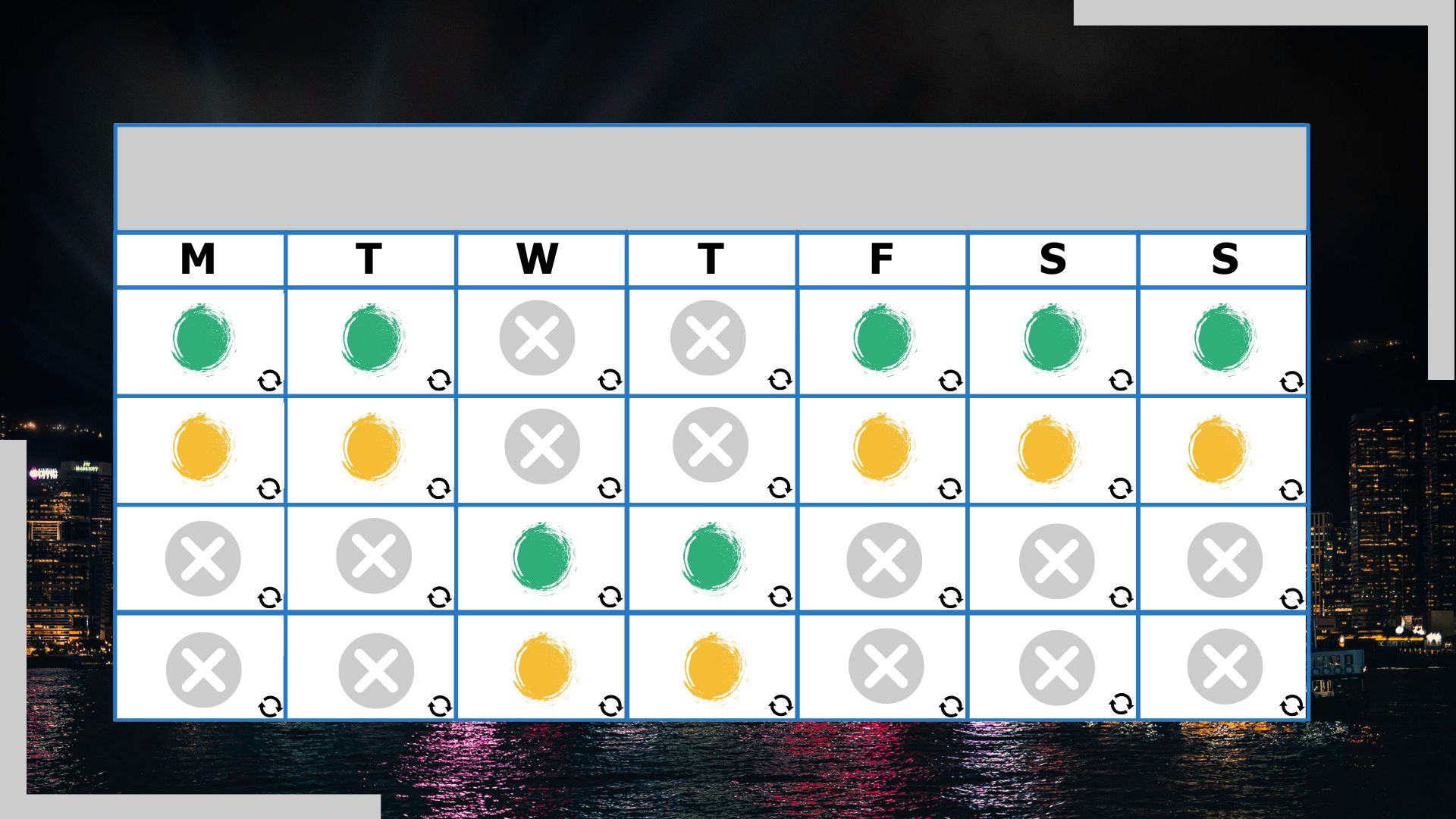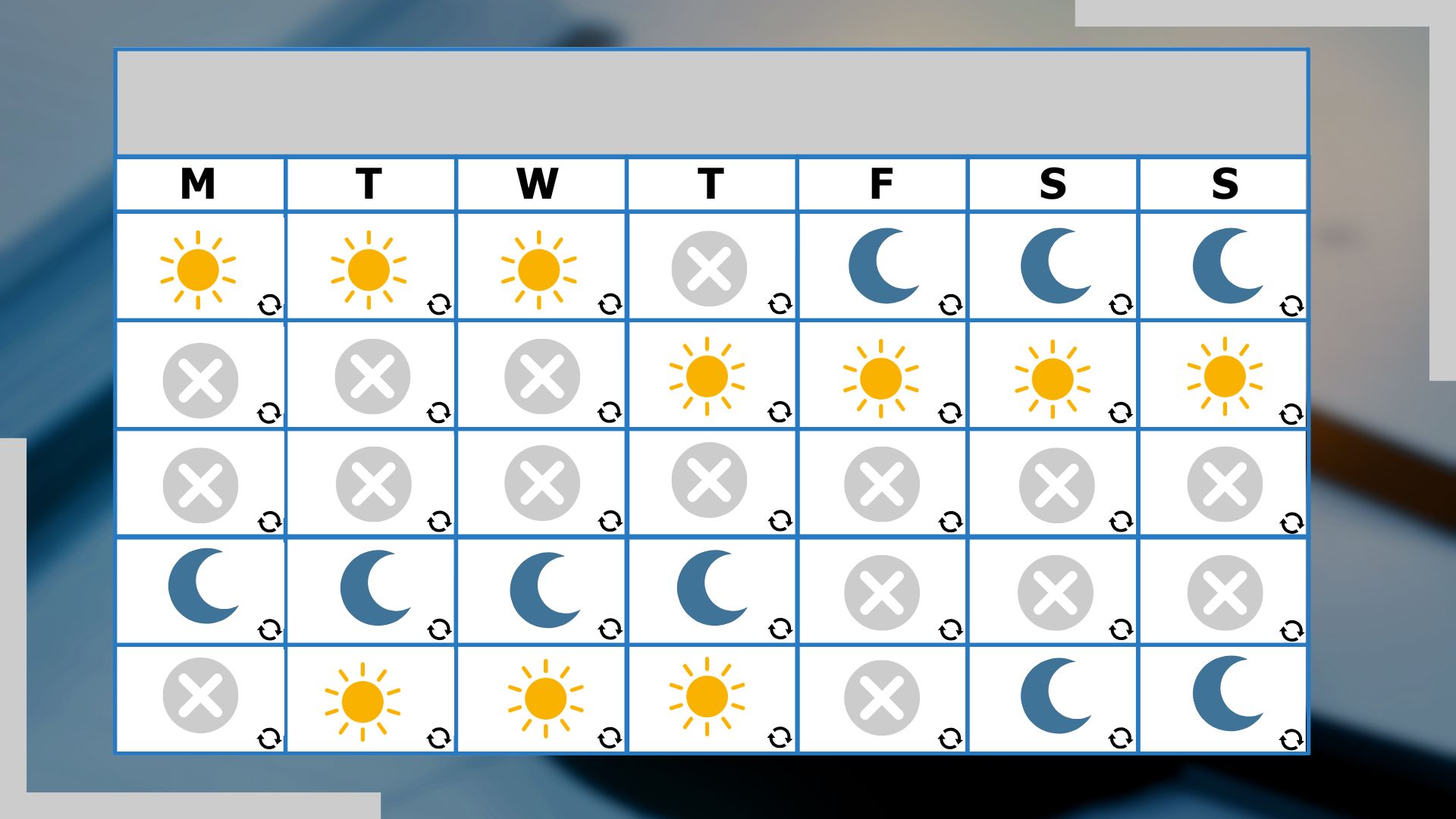Three-shift rotation schedule: complete guide with detailed steps and free templates
This guide will help you to create a three-shift rotation schedule for efficient 24/7 workforce coverage.
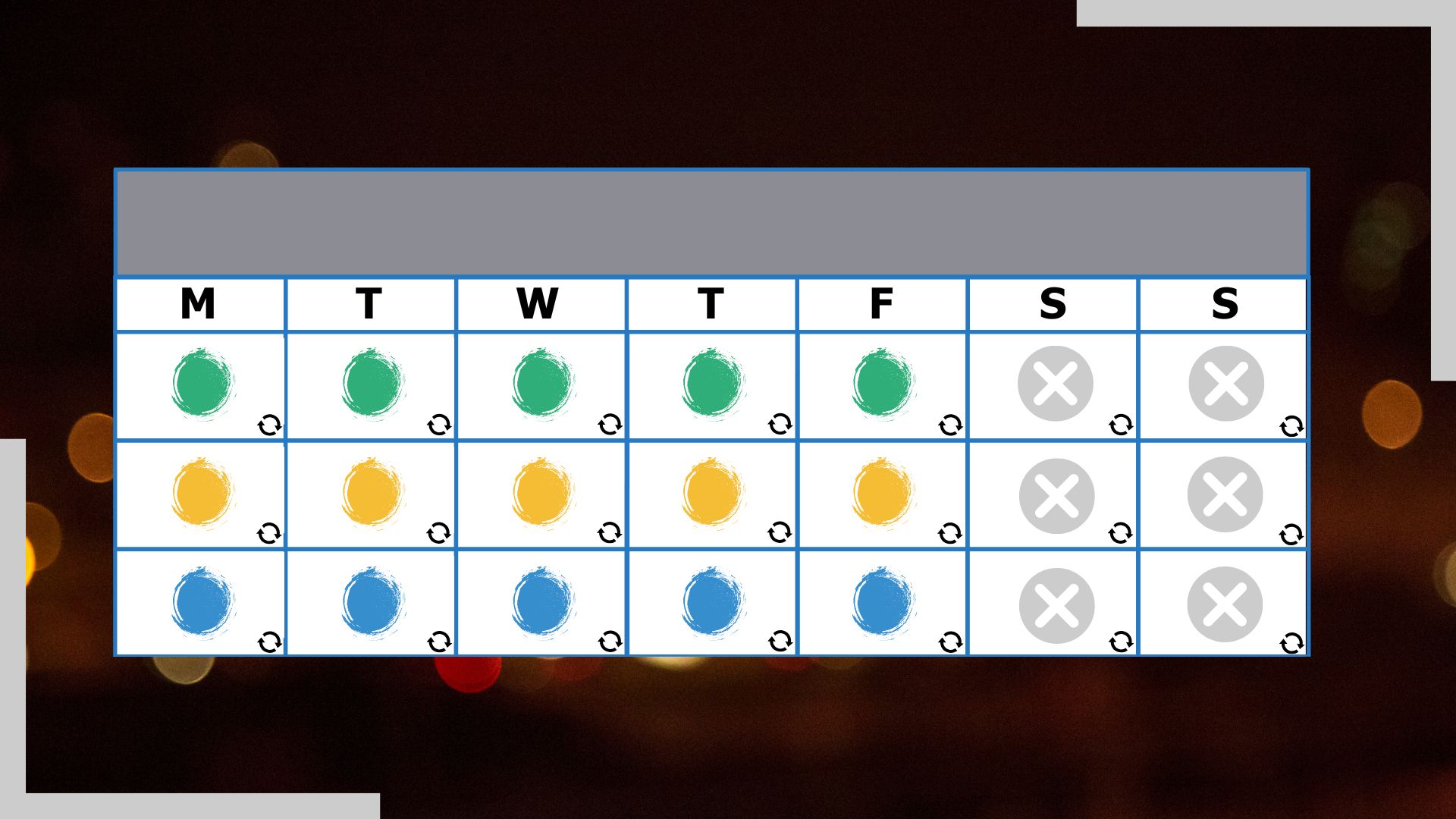
Industries that operate 24/7 such as healthcare, manufacturing, and transportation commonly use a three-shift rotating schedule to ensure continuous coverage while sharing the workload fairly across teams. This article guides you through how to create, implement, and optimise a rotating three-shift schedule for round-the-clock operations including free templates.
What is a three-shift rotation schedule?
A three-shift rotation schedule is a work system that divides the 24-hour day into three 8-hour shifts: first shift (day), second shift (evening), and third shift (night). Employees rotate between these shifts (typically weekly or biweekly) to ensure continuous coverage while distributing night and weekend work fairly. This type of rotation shift schedule is commonly used in industries that operate 24/7, such as manufacturing, healthcare, logistics, and security.
Free three-shift rotating schedule templates
Download or try our free 3-shift schedule templates : ready-to-use Excel template or PlanningPME template, for a powerful and flexible tool to handle rotating 3-shift schedules with ease. Choose the schedule template that best fits your needs.
How to create a three-shift rotating schedule
Create three teams and assign employees to the appropriate teams. For this example, mark weekend as non worked days. Then, choose a colour and a label for your 3 shifts (Morning shift, day shift and night shift for example).
Here are the steps to create a full rotating three-shift schedule for 3 teams for a whole year or even longer. You just need to create a total of 9 recurring tasks following the steps below with PlanningPME or any other software that can handle recurring tasks (e.g., Outlook).
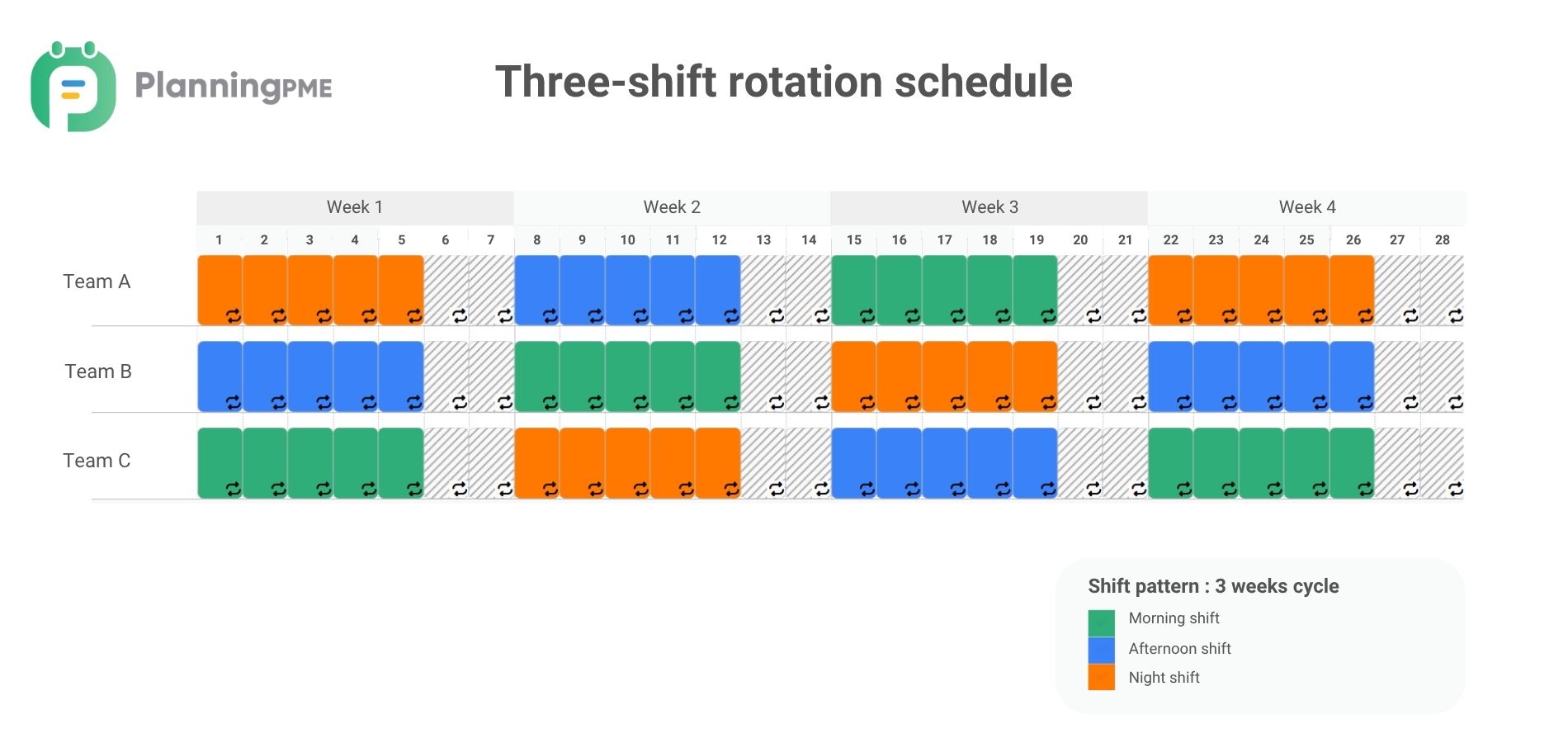
Week 1
Task 1 :
- Resource : Team A
- Label : Shift A
- Days : Monday, Tuesday, Wednesday, Thursday, Friday
- Recurrence : Every 3 weeks
Task 2 :
- Resource : Team B
- Label : Shift B
- Days : Monday, Tuesday, Wednesday, Thursday, Friday
- Recurrence : Every 3 weeks
Task 3 :
- Resource : Team C
- Label : Shift C
- Days : Monday, Tuesday, Wednesday, Thursday, Friday
- Recurrence : Every 3 weeks
Week 2
Task 4 :
- Resource : Team A
- Label : Shift B
- Days : Monday, Tuesday, Wednesday, Thursday, Friday
- Recurrence : Every 3 weeks
Task 5 :
- Resource : Team B
- Label : Shift C
- Days : Monday, Tuesday, Wednesday, Thursday, Friday
- Recurrence : Every 3 weeks
Task 6 :
- Resource : Team C
- Label : Shift A
- Days : Monday, Tuesday, Wednesday, Thursday, Friday
- Recurrence : Every 3 weeks
Week 3
Task 7 :
- Resource : Team A
- Label : Shift C
- Days : Monday, Tuesday, Wednesday, Thursday, Friday
- Recurrence : Every 3 weeks
Task 8 :
- Resource : Team B
- Label : Shift A
- Days : Monday, Tuesday, Wednesday, Thursday, Friday
- Recurrence : Every 3 weeks
Task 9
- Resource : Team C
- Label : Shift B
- Days : Monday, Tuesday, Wednesday, Thursday, Friday
- Recurrence : Every 3 weeks
Create your three-shift rotation schedule
Pros and cons of a rotating three-shift schedule
Advantages
- 24/7 Coverage : Ensures continuous operations across all hours of the day and night, ideal for manufacturing, healthcare, transportation, and security.
- Fair distribution of night shifts : Employees rotate between day, evening, and night shifts, so no one is permanently assigned to an undesirable schedule.
- Maximised equipment utilisation : Machines and facilities can be used around the clock, improving ROI on infrastructure.
- Adaptability : Helps meet global demand or high-volume workflows that require uninterrupted staffing.
- Employee Flexibility : Rotations may offer periods of time off during traditional hours, useful for errands or appointments.
Disadvantages
- Disrupted sleep and health issues : Regular rotation between day and night shifts can lead to fatigue, sleep disorders, and long-term health risks.
- Reduced social and family time : Night and weekend shifts can interfere with social life and family responsibilities.
- Complex scheduling : Requires careful planning to rotate shifts fairly and ensure legal compliance (e.g., rest periods, night premiums).
- Training and communication gaps : Important information may not be properly passed between rotating teams without a strong handover process.
- Increased risk of burnout: : Continuous disruption to circadian rhythms can reduce focus, performance, and overall job satisfaction.
Industries that use the three-shift rotating schedule
The three-shift rotating schedule is essential for industries that require continuous, 24/7 operations without interruption.
Common industries relying on this system to maintain productivity and safety include:
- Healthcare (hospitals, clinics, emergency services)
- Manufacturing and heavy Industry
- Security and surveillance services
- Public transportation and logistics (airports, rail, trucking)
- Energy and utilities (power plants, water treatment, oil and gas)
- Military and defense
- Hospitality (hotels, casinos, large resorts)
- Data centers and IT infrastructure
FAQ
The healthiest rotation follows a forward (clockwise) rotation, from day shift to evening shift to night shift, giving the body more time to adjust and reducing circadian disruption.
Most companies rotate weekly or biweekly, but longer rotations (e.g., monthly) may help employees adapt better to night shifts and maintain more stable sleep cycles.
Yes, you can create and manage a basic 3-shift rotation in Excel using tables and formulas, but scheduling tools like PlanningPME offer automated conflict detection and greater flexibility.
You must comply with labour laws regarding maximum weekly hours, night shift regulations, mandatory rest periods, and overtime pay, these vary by country or region.


